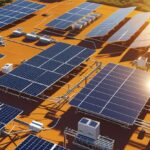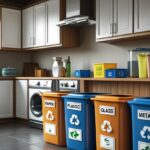How to Improve Energy Efficiency in Commercial Buildings
Rising energy costs and environmental concerns are pushing businesses to prioritize sustainability, and improving energy efficiency in commercial buildings is a smart place to start. Not only does it reduce operational expenses, but it also enhances a company’s reputation and contributes to a greener planet. Whether you manage an office, retail space, or industrial facility, small changes can yield big results. This guide explores practical, actionable strategies to boost energy efficiency, helping you save money and reduce your carbon footprint. Let’s dive into how to improve energy efficiency in commercial buildings with steps that are both effective and approachable.
Why Energy Efficiency Matters for Commercial Buildings
Before exploring solutions, it’s worth understanding why energy efficiency is critical for commercial properties. The benefits go beyond just saving on utility bills.
Cost Savings
Commercial buildings account for a significant portion of energy consumption globally. By optimizing energy use, businesses can cut electricity and heating costs by up to 30%, freeing up funds for other priorities.
Environmental Impact
Energy-efficient buildings reduce greenhouse gas emissions, aligning with global sustainability goals. This not only helps the planet but also appeals to eco-conscious customers and tenants.
Enhanced Property Value
Energy-efficient buildings often command higher market values and attract tenants willing to pay a premium for sustainable spaces. Certifications like LEED or ENERGY STAR add credibility and appeal.
Key Strategies to Improve Energy Efficiency
Improving energy efficiency doesn’t require a complete overhaul. These practical steps can make a significant difference without overwhelming your budget or operations.
Conduct an Energy Audit
An energy audit is the foundation of any efficiency plan. It identifies where your building uses the most energy and pinpoints areas for improvement. Hire a professional or use smart metering tools to assess:
- Lighting and HVAC system performance.
- Insulation and air leakage issues.
- Appliance and equipment efficiency.
An audit provides a roadmap for prioritizing upgrades.
Upgrade Lighting Systems
Lighting accounts for a large share of energy use in commercial buildings. Switching to energy-efficient options can yield immediate savings.
Top Lighting Upgrades
- Replace incandescent bulbs with LED lights, which use 75% less energy.
- Install motion sensors to turn off lights in unoccupied areas.
- Use daylight harvesting systems to maximize natural light.
These changes reduce energy consumption and lower maintenance costs due to LEDs’ longer lifespan.
Optimize HVAC Systems
Heating, ventilation, and air conditioning (HVAC) systems are often the biggest energy consumers. Optimizing them can significantly improve efficiency.
HVAC Efficiency Tips
- Schedule regular maintenance to ensure systems run smoothly.
- Install programmable thermostats to control temperature settings.
- Upgrade to high-efficiency HVAC units with better SEER ratings.
These steps reduce energy waste while maintaining a comfortable environment for occupants.
Building Envelope Improvements
The building envelope—walls, windows, roofs, and insulation—plays a crucial role in energy efficiency. Strengthening it prevents energy loss.
Enhance Insulation
Poor insulation allows heat to escape in winter and enter in summer, forcing HVAC systems to work harder. Adding or upgrading insulation in walls and attics can reduce energy use by up to 20%.
Upgrade Windows
Old windows are a major source of energy loss. Consider:
- Double- or triple-pane windows with low-E coatings.
- Window films to reduce heat gain.
- Weatherstripping to seal gaps and prevent drafts.
These upgrades improve comfort and lower heating and cooling costs.
Seal Air Leaks
Air leaks around doors, windows, and ducts can waste significant energy. Conduct a blower door test to identify leaks, then seal them with caulk or spray foam for quick wins.
Integrating Renewable Energy
Combining energy efficiency with renewable energy sources like solar power amplifies savings and sustainability.
Install Solar Panels
Rooftop solar panels can power your building with clean energy, reducing reliance on the grid. With costs dropping, solar is now a viable option for many commercial properties. Check out our guide to commercial solar power for more details.
Use Energy Storage Systems
Battery storage systems store excess solar energy for use during peak demand or at night. This reduces energy costs and enhances reliability, especially during outages.
Smart Technology for Energy Management
Technology is revolutionizing how commercial buildings manage energy. Smart systems provide real-time insights and automation for maximum efficiency.
Smart Thermostats and Sensors
Smart thermostats adjust temperatures based on occupancy and weather, while sensors monitor energy use in real time. These tools help identify waste and optimize performance.
Building Management Systems (BMS)
A BMS integrates lighting, HVAC, and other systems into a single platform, allowing centralized control. This reduces energy use by ensuring systems only run when needed.
Benefits of a BMS
- Reduces energy waste by up to 15%.
- Provides data for informed decision-making.
- Improves occupant comfort with automated adjustments.
Engaging Occupants in Energy Efficiency
Energy efficiency isn’t just about systems—it’s also about people. Engaging employees and tenants ensures long-term success.
Educate and Train Staff
Teach employees about energy-saving habits, like turning off lights and equipment when not in use. Simple actions, multiplied across a workforce, add up to significant savings.
Incentivize Energy-Saving Behaviors
Create programs to reward teams or departments for reducing energy use. For example, offer recognition or small bonuses for meeting efficiency goals.
Overcoming Common Barriers
While the benefits are clear, some challenges can slow progress. Here’s how to address them.
High Upfront Costs
Energy-efficient upgrades can be expensive, but financing options like green loans or energy performance contracts can spread costs over time. Government incentives also help offset expenses.
Lack of Awareness
Some businesses underestimate the savings potential of efficiency measures. Conducting an energy audit and sharing the results can build a compelling case for investment.
Improving energy efficiency in commercial buildings is a win-win for your bottom line and the environment. By starting with an energy audit, upgrading lighting and HVAC systems, enhancing the building envelope, and integrating smart technology, you can achieve significant savings and sustainability. Engaging occupants and exploring renewable energy options like solar power further amplify your impact. The journey to efficiency starts with small, manageable steps that add up over time. Take the first step today—schedule an energy audit or explore local incentives to see how your building can become a model of sustainability.



